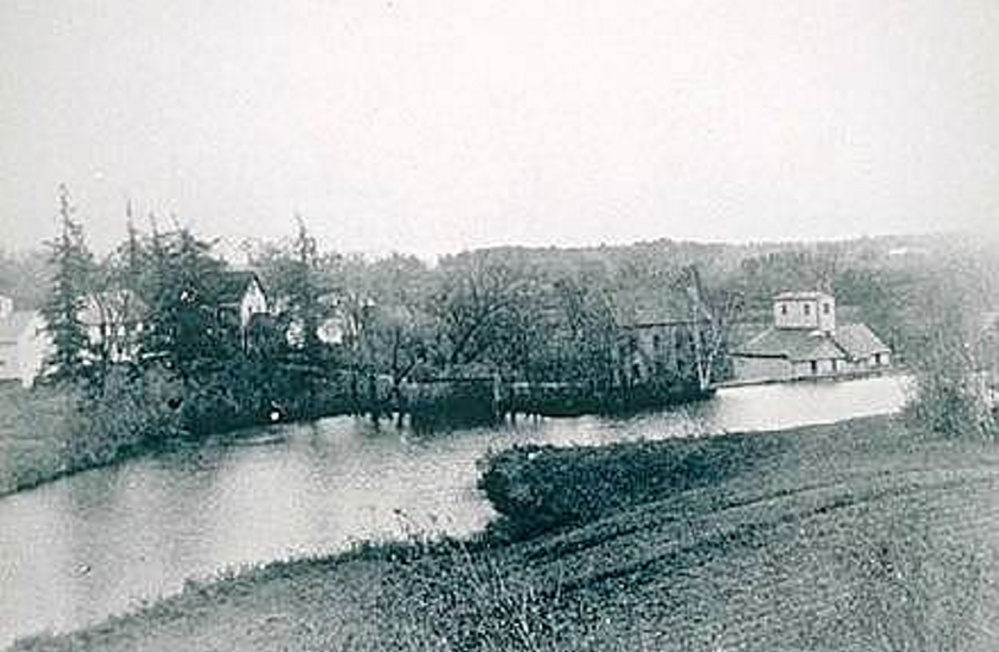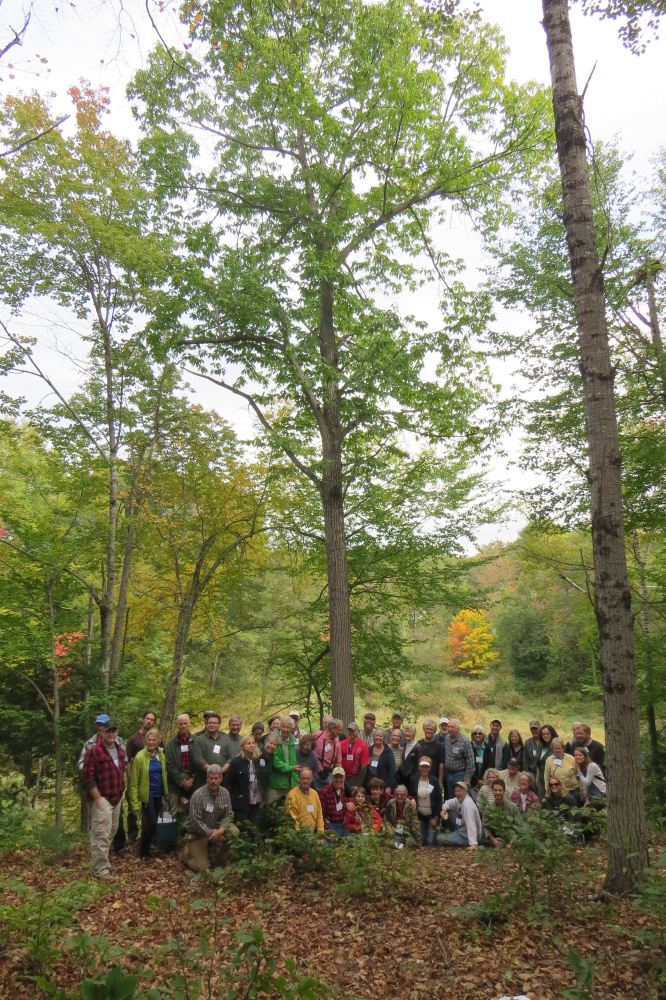Eighty members of the American Chestnut Foundation visited Readfield on Oct. 7 to see one of the larger American chestnut trees known to exist in Maine, according to a news release from Dale Potter-Clark.
Discovered last year on private property, it is located in the historic area of town known as Factory Square. The tree towers over other species surrounding it at 82 feet tall. Its circumference at the base is 69 inches. By comparison, as of 2015 the largest American chestnut on record in Maine is in Orono. According to Jan Santerre, coordinator of the big tree registry for the State of Maine Forest Service, the Orono tree stands 78 feet and is a whopping 128 inches in circumference.
“When last checked the health was definitely poor. Unless it is dead, that is the champion,” said Santerre, according to the release. “In that case the status as largest would go to a tree in Atkinson.” Also last measured in 2015, the Atkinson tree stands 71 feet tall and has a 115-inch circumference. In Lovell a 115-foot tall American chestnut, thought to be 100 years old, was discovered in 2016, but the circumference of that tree is only 50.25 inches. The largest trees are determined through a calculation called the total point value, according to Santerre. The total point value considers the trees height and circumference and also their crown spread, so the tallest tree does not necessarily mean largest using that calculation.
“So the Readfield tree is kind of in the middle as far as size of the surviving trees around the state” said Brian Roth from ACF’s Maine chapter, according to the release.
Up until the early 20th century American chestnuts covered a quarter of the hardwood forests in the eastern U.S. from Maine to Georgia and west to the Ohio River Valley. Referred to as “the redwood of the East,” it was not unusual for them to grow 100 feet tall and 5 feet across at the base. They provided a valuable economic resource in timber and nuts, as well as a food source for wildlife. Around 1900 an Asiatic chestnut blight was accidentally imported into the eastern U.S. and by 1950 it had decimated approximately four billion trees. In 1983, a group of scientists and laymen decided to counteract the ecological disaster while the species could still be saved. They formed the American Chestnut Foundation and initiated a sophisticated breeding program so to produce blight-resistant trees.
Attending the event were foundation members from 19 states, from as far away as Alabama, Michigan and Ohio. They were bused from South Portland where they had attended their 34th annual meeting and national conference the day before; on the second day their chestnut restoration tour included locations in Vienna, East Winthrop and Readfield.
Jerry Bley from the Readfield Conservation Commission and Dale Potter-Clark from the Readfield Historical Society greeted them at Gile Hall on Old Kents Hill Road and they hiked to Factory Square where Potter-Clark gave a brief history of the industry that once existed there. She also shared vintage photos that included one taken 125-150 years ago, of the area where the Readfield American chestnut now stands.
Tom Klakgave gave a talk about Readfield’s tree and of efforts being made to preserve others that survive, with an eye towards increasing the number of healthy, disease resistant American chestnuts in Maine and elsewhere. Klak, who is a board member of ACF’s Maine chapter and a professor in the Department of Environmental Studies at the University of New England, grows chestnut seedlings in his lab in Saco, for transplanting to viable locations.
Visitors were thrilled to find a baby American chestnut in proximity to Readfield’s large tree, “which means there has to be a mate nearby” said the experts. Andrew Walsh, a member of the Readfield Conservation Committee, was present and knew where another tree is located but quite some distance from the one being viewed. Klak shared that given the right conditions an American chestnut can be pollinated from as far away as 1/2 mile.
The goal of the foundation, which has 13 chapters that include all six New England states, is to introduce blight-resistant American chestnuts to their original forest range within the early decades of the 21st century.
Anyone who knows where an American chestnut is located in Maine is encouraged to email Roth, the science and data coordinator for the Maine Chapter of ACF at brian.roth@maine.edu. For more information about the Maine chapter, visit acf.org/me.
Copy the Story LinkSend questions/comments to the editors.




Success. Please wait for the page to reload. If the page does not reload within 5 seconds, please refresh the page.
Enter your email and password to access comments.
Hi, to comment on stories you must . This profile is in addition to your subscription and website login.
Already have a commenting profile? .
Invalid username/password.
Please check your email to confirm and complete your registration.
Only subscribers are eligible to post comments. Please subscribe or login first for digital access. Here’s why.
Use the form below to reset your password. When you've submitted your account email, we will send an email with a reset code.